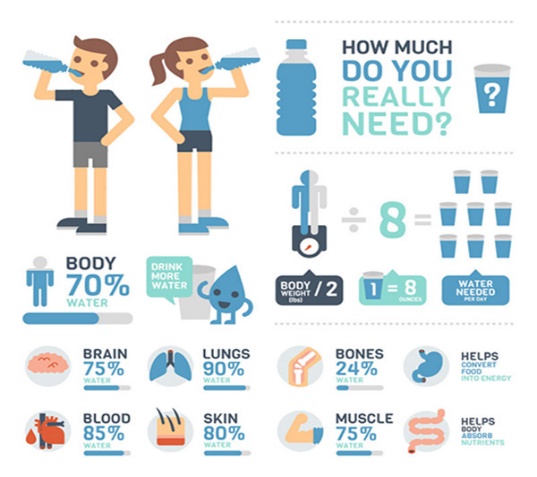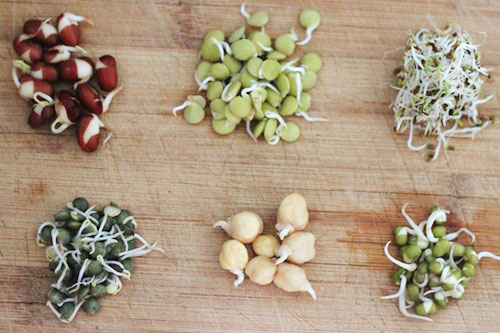INDIA New England Columnist
Protein? This is one question I see everybody concerned with and even as a professional I get this question asked all the time. If you look at the ads in the gym for bodybuilding they are talking about proteins, you look up for weight loss they talk about proteins, as a matter of fact even baby formula ads focuses on proteins.
Last week at my son’s game I was talking to a group of parents who felt that their team didn’t do well coz many of the players were vegetarians, who tend not to get enough protein. To top this, later in the evening at a social gathering I was a passive participant in a heated argument on being vegetarian vs. non vegetarian and one of the strongest argument was based on protein. And all this psychological conditioning has got us all fixated on protein so much that we tend not to focus on other nutrients.
Hence, I felt like choosing this as the topic for this month’s column, with the hope to separate fact from myth. Let’s start with the basics.
What is Protein?
Protein, also known as the building block of life, is an important nutrient required for building, maintenance and repair of tissues in the body. They are made up of smaller building blocks called amino acids. There are 20 different amino acids some that our body can produce and some it cannot and must be obtained from our food ( meat, beans/legumes, grains, nuts, vegetables etc). And as long as our diet consists of a variety of these, protein needs are easily met.
How do we calculate Protein Requirement?
We all know that every body is different and so are its needs. While there are a lot of factors to be considered for a more accurate allowance the Recommended Dietary Allowance (RDA) for protein for an average sedentary adult is only 0.8 gm per kilogram of your body weight.
EG- Body weight of 60 kg = 60 x 0.8 = 48 gms
(to convert weight from pounds to kg you divide it by 2.2)
Protein needs for children are little higher than adults for obvious reason, higher growth rate.
1-4 yrs – 1.1gm/kg body weight.
4-13 yrs – 0.95 gm/kg body weight
13-18 yrs – 0.85 gm/kg body weight
You will be surprised to learn that protein needs are actually much less than what many of you are consuming. Even this value has a large margin of safety and the body’s true need is even lower.
Let’s look into protein content of some foods
Meat, Poultry, Fish and Eggs
| Food (cooked) | Serving | Protein(gms) |
| Chicken | 3oz | 28 |
| Turkey | 3oz | 25 |
| Egg (large) | 1 egg | 6 |
| Salmon | 3oz | 22 |
| Shrimp | 3oz | 20 |
| Tuna | 3oz | 22 |
Beans/Legumes and Grain
| Food (cooked) | Serving (cup) | Protein(gms) |
| Rajma/Black beans | 1/2 | 8 |
| Lentils | 1/2 | 9 |
| Soy (Edamame) | ½ | 9 |
| Chickpeas | ½ | 7 |
| Peas | ½ | 4 |
| Quinoa | ½ | 4 |
Nuts and Seeds
| Food | Serving | Protein(gms) |
| Pumpkin seeds | 1 oz | 9 |
| Almonds | 1 oz | 6 |
| Peanuts | 1 oz | 7 |
| Soy Nuts | 1 oz | 12 |
| Cashew | 1 oz | 4 |
| Sunflower seeds | 1 oz | 6 |
| Chia seeds | 1 oz | 5 |
| Flax seeds | 1 oz | 6 |
| Hemp seeds | 1 oz | 9 |
| Walnuts | 1 oz | 4 |
| Pistachios | 1 oz | 6 |
Dairy
| Food | Serving | Protein (gms) |
| Milk | 1 cup | 8 |
| Regular yogurt | 1 cup | 11 |
| Greek yogurt | 6 oz | 18 |
| Paneer or Cottage cheese | 4 oz | 14 |
| String cheese | 1 piece | 6 |
| Mozzarella cheese | 1 oz | 7 |
Now let’s analyze basic meal plans to see if we meet our goals.
Vegetarian Meal
| Meal | Item | Serving | Protein (gm) |
| Breakfast | Tea
Oatmeal Walnuts |
1 cup
1 bowl(1 cup milk) 1 oz |
8 4 |
| Mid-morning snack | Greek yogurt | 6 oz | 18 |
| Lunch | Rajma
Rice |
1 cup | 16
|
| Snack | Tea (1/4 cup milk) | 1 cup
|
1-2 |
| Dinner | Roti
Sabzi Lentil/Dal |
2
½ cup 1 cup |
–
– 14 |
Total protein = 60 gms
Non-Vegetarian meal
| Meal | Item | Serving | Protein (gm) |
| Breakfast | Tea (1/4 cup milk)
Toast Boiled egg |
1 cup
2 sl 1 |
1-2
– 6 |
| Mid-morning snack | Greek Yogurt | 6 oz | 18 |
| Lunch | Chicken
Rice |
3 oz | 28 |
| Snack | Tea (1/4 cup milk) | 1 cup
|
1-2 |
| Dinner | Roti
Vegetable curry Lentil/Dal |
2
½ cup 1 cup |
–
– 14 |
Total Protein = 68 gms
The above menu plans clearly show that we meet our protein goals easily be it vegetarian or non-vegetarian diet. In fact, we consume more than our RDA. If you look at the menu, I have not even counted the protein content from bread/rice/vegetables which will further raise the number, albeit by a small amount.
A word of caution on high protein diets
High protein diets especially for weight loss and enhanced athletic performance have been greatly publicized over recent years. However these diets are supported by very little scientific research. Studies have shown that the healthiest diet is that which has a good balance of carbohydrates (grains, millets, fruits and veggies), proteins (meat/fish/beans/legumes) and good fat ( nuts/seeds/avocado/ghee). In fact it is even recommended for weight loss and for optimum athletic performances.
There may be some vigorous athletic training or pregnancy or medical condition where protein (overall caloric) needs may increase and that’s where seeks professional advice is recommended.
The high protein low carb fad diets which is very popular these days for weight loss may show some quick short term results but can contribute to serious health problems like osteoporosis, kidney disease, cardiovascular disease and even cancer. My personal recommendation is to stay away from those. Remember the basic rule, you didn’t gain all this weight overnight and so you will not lose it all overnight in a healthy way.
Concluding thoughts
Hopefully this article has been able to help clarify any confusion related to the amount of protein one needs to consume on a regular basis. The article also highlights the fact that our conventional Indian diet offers a good mix and balance of all necessary nutrients including protein. Hence it is my humble request to prevent your gentle minds from falling prey to this protein and “supplement” hype. Instead I urge you to go back to your roots and draw inspiration from your grandma’s cooking J. All signs of modern life has shown us over and over that when it comes to our diet our ancestors had got it right. Of course eating in moderation and variety is the key.















Very well explained article !! I have a question about our wheat , bajri , besan. I use them a lot in my cooking , How much protein we get from that ??
Hello Premal ji,
Thank you.
Protein content of some commonly used grains/millet in our South Asian households like wheat/jowar/bajra/corn/rice is roughly in the range of 10-12 gm per 100 gms or 3/4th measuring cup Whereas Besan, will provide roughly 22gms per 100 gms.
Hope this helps.
Regards,
Sneh